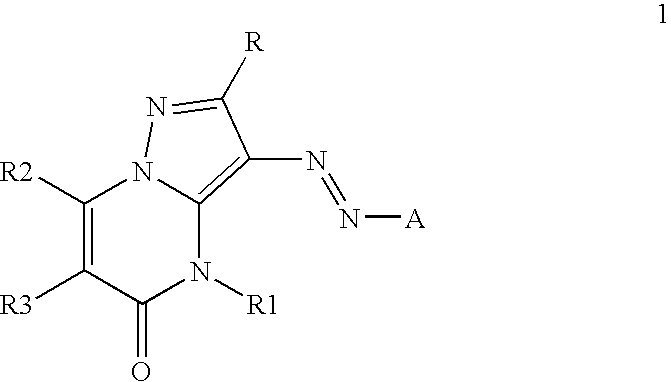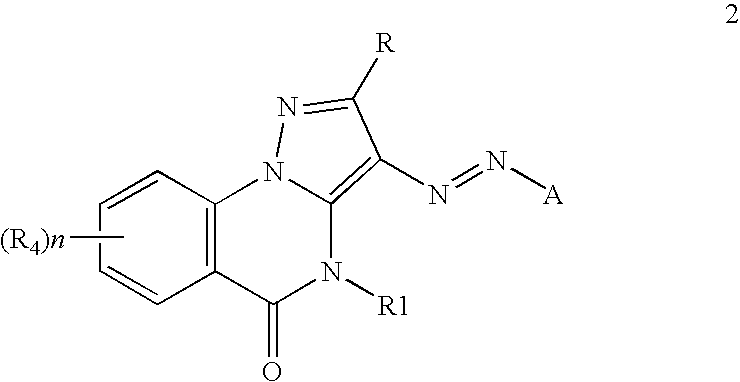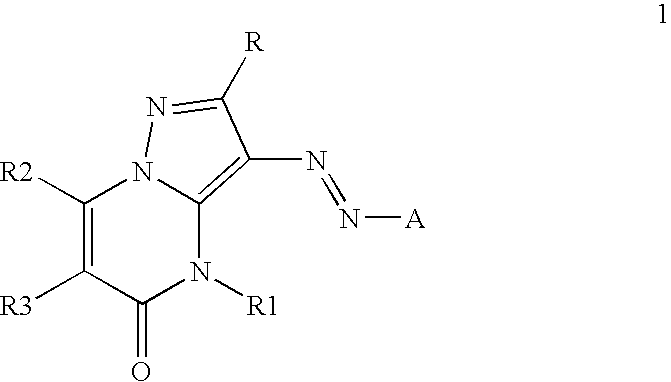Inkjet inks containing azo pyrazolobenzopyrimidineone class of colorants
a technology of azo pyrazolobenzopyrimidineone and inkjet ink, which is applied in the field of new colorants, can solve the problems of image fastness problems, dyes currently in commercial aqueous ink formulations that are less than optimal in one property, and difficulty in finding dyes which possess all of the above attributes, so as to improve the probability, improve the effect of ozone fastness and light stability
- Summary
- Abstract
- Description
- Claims
- Application Information
AI Technical Summary
Benefits of technology
Problems solved by technology
Method used
Image
Examples
examples
Preparation of Inventive Dyes
[0084]The coupler precursors to the dyes of the invention may be generally synthesized using the methods described in EP 0374781, incorporated herein by reference, Journal of Heterocyclic Chemistry, (1969) 6(6) 947, incorporated herein by reference, or the modification described below. Dyes of the invention are prepared according to the general method described in JP 3241858, incorporated herein by reference, or by the variation described below.
Preparation of Inventive Dye I-2
[0085]
[0086]o-Hydrazinobenzoic acid hydrochloride (9.4 g, 0.05 mol) was suspended in 100 mL of water and to it was added 10 mL of conc. aqueous hydrochloric acid followed by pivaloyl acetonitrile (6.25 g, 0.05 mol). The mixture was stirred at room temperature under nitrogen for thirty minutes and then heated to reflux and held at reflux for two hours. The heat was turned off and the mixture was left to cool to room temperature overnight. A solid came out of solution and it was colle...
PUM
| Property | Measurement | Unit |
|---|---|---|
| viscosities | aaaaa | aaaaa |
| viscosities | aaaaa | aaaaa |
| surface tensions | aaaaa | aaaaa |
Abstract
Description
Claims
Application Information
 Login to View More
Login to View More - R&D
- Intellectual Property
- Life Sciences
- Materials
- Tech Scout
- Unparalleled Data Quality
- Higher Quality Content
- 60% Fewer Hallucinations
Browse by: Latest US Patents, China's latest patents, Technical Efficacy Thesaurus, Application Domain, Technology Topic, Popular Technical Reports.
© 2025 PatSnap. All rights reserved.Legal|Privacy policy|Modern Slavery Act Transparency Statement|Sitemap|About US| Contact US: help@patsnap.com



